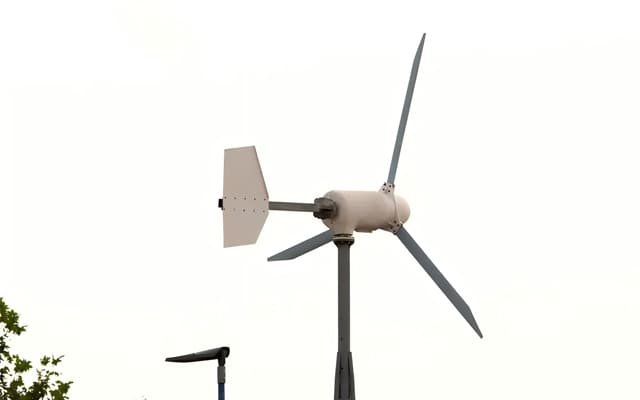Accurate wind data is essential for the efficient operation of any windmill generator. These systems continuously monitor two critical parameters—wind speed and wind direction—to ensure smooth and optimized performance. Let’s explore how modern windmill generators collect and use this information to produce electricity effectively.
Wind Speed Monitoring: When the Windmill Generator Starts or Stops
A digital anemometer on top of the nacelle tracks wind speed in real time. It sends wind speed data to the control system every second. Every 10 minutes, the system calculates an average wind speed to decide whether the generator should run or pause.
-
A small windmill generator typically starts generating power when wind speed reaches 3 m/s.
-
A larger unit usually begins working at around 8 m/s.
Because the anemometer sits behind the rotor, it doesn’t offer perfect accuracy. However, it provides consistent and reliable data for operational decisions, even if it doesn’t support precision tasks like power curve plotting.
Wind Direction Monitoring: Keeping the Rotor Facing the Wind
Wind vanes on both sides of the nacelle measure wind direction. They detect how far the wind’s path deviates from the nacelle’s central axis. To prevent errors, most systems use two vanes and compare their readings.
When both vanes disagree, the system stops yawing to avoid misalignment. If wind speed falls below 3 m/s, the yaw system shuts down to avoid unnecessary energy use.
Yaw System: Automatically Aligning with the Wind
The yaw system in a windmill generator adjusts the nacelle and rotor to face the wind head-on. As the wind direction shifts, the yaw motor rotates the nacelle and blades, ensuring the rotor always captures optimal wind energy.
This system keeps the turbine aligned with the wind at all times. Unlike wind speed, changes in wind direction don’t affect power output directly. But staying aligned allows the generator to make the most of any available wind.
Pitch Control System: Managing Wind Speed Variations
A pitch control system adjusts the blades’ angle based on wind speed:
-
When the wind blows too fast, it reduces the blade angle to avoid damage or overspeed.
-
When the wind slows down, it increases the angle to catch more wind.
This smart adjustment helps the windmill generator maintain ideal rotor speed and deliver stable power output in changing conditions.
Conclusion
By actively tracking wind speed and direction, windmill generators respond quickly to weather changes and adjust their operation in real time. Their advanced sensors, yaw motors, and pitch systems allow them to work safely, efficiently, and consistently.
If you’re considering a windmill generator for your off-grid system or home energy needs, understanding these built-in features will help you choose a model that delivers both reliability and long-term performance.

